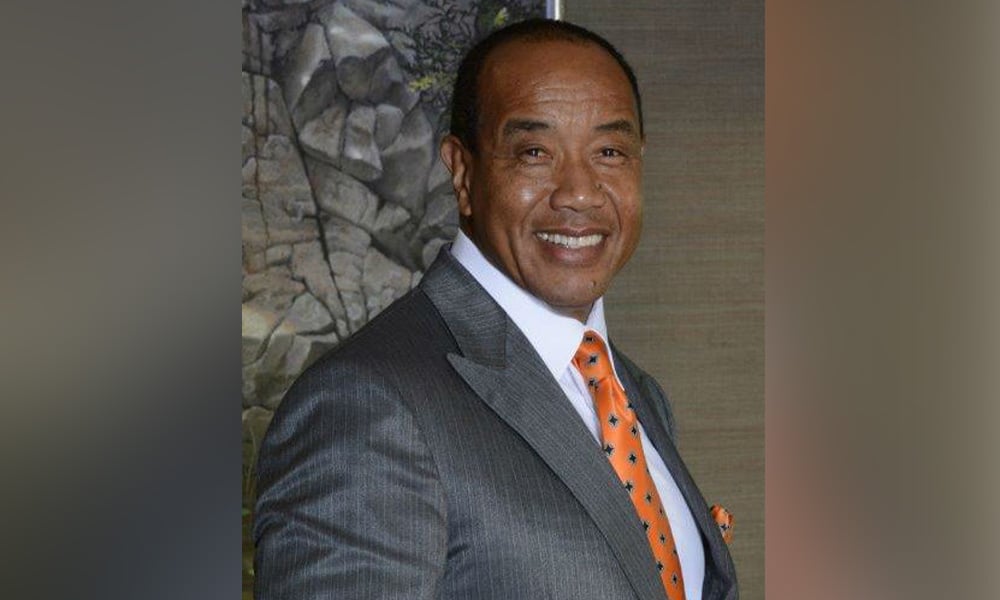Industry veterans and rookies alike will gain a new respect and pride in their profession by picking up this recent release by former Merrill Lynch executive Win Smith Jr., who sat down with WP.
Industry veterans and rookies alike will gain a new respect and pride in their profession by picking up this recent release by former Merrill Lynch executive Win Smith Jr.
I first learned of Win Smith’s book shortly after my arrival at Wealth Professional last October. My editor had passed to me an email from a publisher in New York that wondered if we’d be interested in reviewing a copy of Catching Lightning in a Bottle. My editor didn’t have time but I jumped at the opportunity.
And I’m glad I did.
Writing about financial advisors, I can’t think of another book that covers the history, and more importantly, the culture of Merrill Lynch down through the years.
Win Smith went to work at Merrill Lynch immediately after graduating with his MBA from the Wharton School of Business at the University of Pennsylvania in 1974. He stayed until early in 2002 when he abruptly resigned from the company after 28 years at the company.
Almost 600 pages in length, Smith could easily have written two or three more volumes given the amount of content that’s packed into the book. That said, it never feels as though the subject matter is rushed in any way.
This book isn’t about what a great job he did at the company or the bragging rights for being the son of one of the founders, it’s about a business that spent the better part of 100 years catering to the needs of Main Street over Wall Street.
Smith takes readers deep inside the organization putting you in the middle of many vital decisions made by company CEOs, from Charlie Merrill and Win Smith Sr., all the way up to John Thain, who had the most difficult decision of all: to sell the company to Bank of America in 2008.
As someone who considers himself a student of business history there are many details in the book that come as a total surprise, none more so than the fact Charlie Merrill and partner Eddie Lynch acquired Safeway Stores in 1926 growing it into America’s second-largest grocery store chain by 1953.
Merrill’s 1956 obituary in the New York Times suggests Safeway is one of the founder’s biggest achievements. The Safeway coverage alone is worth the price of admission.
Looking at the 15 chapter titles in the book, it’s impossible to pick one that stands head and shoulders above the rest.
Using life as a metaphor where good times are mixed with the bad, four chapters in the book help explain why Merrill employees were so bitterly disappointed and crushed by the eventual sale of the company to Bank of America.
Chapters 5 and 6 tell the story of a company down on its luck struggling for direction and finding its footing thanks to Charlie Merrill’s 10 Commandments which would keep Merrill Lynch in good stead from 1940 through 2001.
And then the worm turned.
Chapters 13 and 14 tell the story of CEO Stan O’Neal’s systematic dismantling of all that was good at Merrill Lynch including its five Principles, core beliefs that guided the company through good times and bad.
Gone was concern for “Mother Merrill” replaced by one simple mantra: Make as much money as humanly possible no matter the cost.
Win Smith left Merrill Lynch the day he realized the company he knew was gone forever. It was a very sad ending to one of America’s great independent businesses.
Win Smith’s words make it a very exciting trip nonetheless.
If you’re an advisor, it’s a must read.
Note: WP sat down with Win Smith Friday morning. On Monday we’ll tell you what else we learned from the former Merrill executive.
I first learned of Win Smith’s book shortly after my arrival at Wealth Professional last October. My editor had passed to me an email from a publisher in New York that wondered if we’d be interested in reviewing a copy of Catching Lightning in a Bottle. My editor didn’t have time but I jumped at the opportunity.
And I’m glad I did.
Writing about financial advisors, I can’t think of another book that covers the history, and more importantly, the culture of Merrill Lynch down through the years.
Win Smith went to work at Merrill Lynch immediately after graduating with his MBA from the Wharton School of Business at the University of Pennsylvania in 1974. He stayed until early in 2002 when he abruptly resigned from the company after 28 years at the company.
Almost 600 pages in length, Smith could easily have written two or three more volumes given the amount of content that’s packed into the book. That said, it never feels as though the subject matter is rushed in any way.
This book isn’t about what a great job he did at the company or the bragging rights for being the son of one of the founders, it’s about a business that spent the better part of 100 years catering to the needs of Main Street over Wall Street.
Smith takes readers deep inside the organization putting you in the middle of many vital decisions made by company CEOs, from Charlie Merrill and Win Smith Sr., all the way up to John Thain, who had the most difficult decision of all: to sell the company to Bank of America in 2008.
As someone who considers himself a student of business history there are many details in the book that come as a total surprise, none more so than the fact Charlie Merrill and partner Eddie Lynch acquired Safeway Stores in 1926 growing it into America’s second-largest grocery store chain by 1953.
Merrill’s 1956 obituary in the New York Times suggests Safeway is one of the founder’s biggest achievements. The Safeway coverage alone is worth the price of admission.
Looking at the 15 chapter titles in the book, it’s impossible to pick one that stands head and shoulders above the rest.
Using life as a metaphor where good times are mixed with the bad, four chapters in the book help explain why Merrill employees were so bitterly disappointed and crushed by the eventual sale of the company to Bank of America.
Chapters 5 and 6 tell the story of a company down on its luck struggling for direction and finding its footing thanks to Charlie Merrill’s 10 Commandments which would keep Merrill Lynch in good stead from 1940 through 2001.
And then the worm turned.
Chapters 13 and 14 tell the story of CEO Stan O’Neal’s systematic dismantling of all that was good at Merrill Lynch including its five Principles, core beliefs that guided the company through good times and bad.
Gone was concern for “Mother Merrill” replaced by one simple mantra: Make as much money as humanly possible no matter the cost.
Win Smith left Merrill Lynch the day he realized the company he knew was gone forever. It was a very sad ending to one of America’s great independent businesses.
Win Smith’s words make it a very exciting trip nonetheless.
If you’re an advisor, it’s a must read.
Note: WP sat down with Win Smith Friday morning. On Monday we’ll tell you what else we learned from the former Merrill executive.



